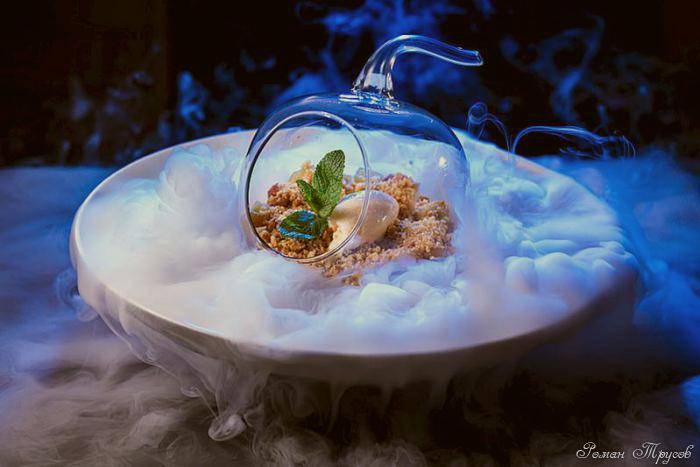Molecular cuisine, like the modern direction of cooking, uses scientific knowledge in the cooking process. As a result of this approach, cooks are able to change the physical properties of the product to produce dishes that are radically different from their usual shape and consistency. And, of course, such scientific experiments give gourmets a completely stunning bouquet of flavors and smells.
In their work cooks are guided by several generally recognized technologies:
Espumization. One of the most popular ways of cooking, in which food turns into foam, is due to the introduction, for example: soy lecithin, dry protein, thickeners, gellants, with a siphon or aerator ... Tacte technology can turn into a foam absolutely any product, including meat, bread or fruit. After carrying out such a procedure, the prepared dish becomes extremely airy, while maintaining its own taste qualities. Using the process of espumization, you can taste the foam with the taste of meat by drinking it with a tube made from a glass.
Geleification and spherification. Thanks to this technology, molecular cuisine is enriched with dozens of new recipes. Products began to turn into gel with the help of usual gelatin or alginates, and experienced chefs demonstrate master-classes on the production of gell-like eggs from any liquids.
Emulsification. The emulsion is a liquid in which the distribution of water and fats has occurred. For example, milk, where water and milk fat are combined together. New cooking uses this method of dividing the liquid during the preparation of traditional salads, sauces, cocktails and serves them in the form of mouth-watering sauces.
Vacuum technology. Molecular cuisine offers and habitual-looking dishes, prepared according to the technology of suvid. The original products are packed in a vacuum bag, after which a long process of preparation in a water bath is made with the maintenance of a stable temperature. The type of dish remains the same, but the taste becomes more saturated.
Use of low temperatures. This method of preparation uses liquid nitrogen and dry ice to create magnificent mousses and ice cream with a distinctive taste. Chefs widely used the process of baking food while maintaining minus temperatures.
Thanks to the use of modern technologies in cooking, molecular cuisine is strikingly different from traditional cooking, and the taste and appearance of dishes evokes a whole storm of emotions.
